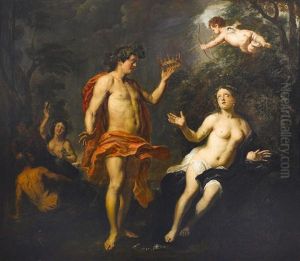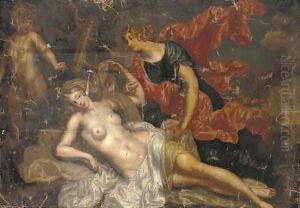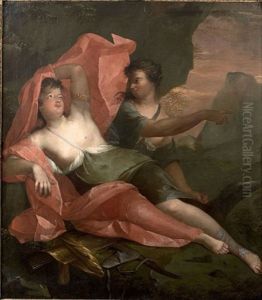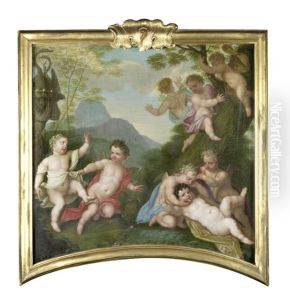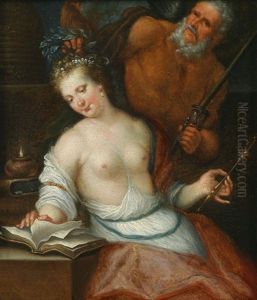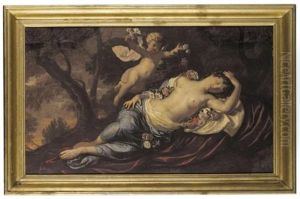Augustin Terwesten Paintings
Augustin Terwesten was a Dutch painter born in The Hague in 1649. He was known primarily for his work as a history painter and his contributions to decorative art within interior design. Terwesten established himself in an era that was rich with Dutch artistic talent, during the period known as the Dutch Golden Age, which is renowned for its remarkable achievements in painting.
Terwesten began his artistic education under the guidance of local artists in The Hague. He further honed his skills by studying under the painter Willem Doudijns. In his formative years, Terwesten's work was influenced by the grandeur and dynamism of the Baroque style, which was prevalent throughout Europe at the time. He became adept at creating large-scale historical paintings, which were characterized by dramatic lighting, rich color, and a sense of movement, all of which were hallmarks of the Baroque aesthetic.
In 1672, Terwesten decided to expand his artistic horizons and embarked on a journey to Italy, which was a common practice among artists seeking to study the works of the Renaissance and ancient classical art firsthand. During his time in Italy, Terwesten was particularly influenced by the work of the great masters such as Raphael and Michelangelo. He spent a significant amount of time in Rome, which was a central hub for artists, before returning to The Hague in 1677.
Upon his return, Terwesten became a member of the Guild of Saint Luke, which was an association of artists. His reputation grew, and he received commissions for decorative works in palaces and public buildings, as well as for private collections. He was known for his ability to integrate his artwork into the architectural environment, creating cohesive and immersive spaces. In addition to history paintings, Terwesten also executed a number of portraits and allegorical works.
Augustin Terwesten's legacy includes his influence on younger artists and his role in the artistic community of his time. He was instrumental in the foundation of the Confrerie Pictura, an organization that was established by a group of artists who split from the Guild of Saint Luke, seeking more autonomy and control over the art market in The Hague. Terwesten's work continued to be appreciated for its grandeur and baroque sensibilities well into his later years.
Augustin Terwesten passed away in 1711, leaving behind a body of work that reflected both the artistic traditions of the Dutch Golden Age and the broader European Baroque movement. While he may not be as widely known as some of his contemporaries, his contributions to the art of his time remain significant, particularly in the context of Dutch historical painting and decorative arts.
